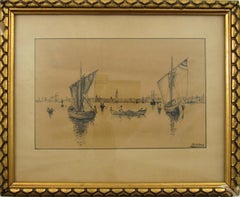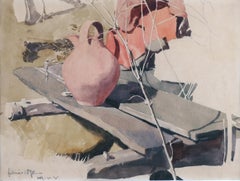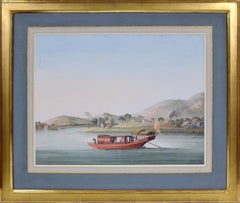
Chinese Craft on the Pearl River.
View Similar Items
Want more images or videos?
Request additional images or videos from the seller
1 of 5
UnknownChinese Craft on the Pearl River. 1810
1810
About the Item
- Creation Year:1810
- Dimensions:Height: 22.56 in (57.3 cm)Width: 26.7 in (67.8 cm)Depth: 0.79 in (2 cm)
- Medium:
- Movement & Style:
- Period:
- Condition:Framed and glazed, overall size: 67.8cm by 57.3cm by 2cm.
- Gallery Location:London, GB
- Reference Number:Seller: 1014581stDibs: LU141928780812
About the Seller
5.0
Vetted Seller
These experienced sellers undergo a comprehensive evaluation by our team of in-house experts.
Established in 1979
1stDibs seller since 2020
11 sales on 1stDibs
Typical response time: 4 hours
More From This SellerView All
- Chinese Craft on the Pearl River.Located in London, GB[CHINESE SCHOOL]. Chinese Craft on the Pearl River. Canton, circa 1810. Pencil, water colour and body colour drawings of craft, heightened with white on paper watermarked ‘J Whatm...Category
1810s Naturalistic Landscape Drawings and Watercolors
MaterialsWatercolor
- Chinese Craft on the Pearl River.Located in London, GB[CHINESE SCHOOL]. Chinese Craft on the Pearl River. Canton, circa 1810. A pencil, water colour and body colour drawing of craft, heightened with white on paper watermarked ‘J Whatm...Category
1810s Naturalistic Landscape Drawings and Watercolors
MaterialsWatercolor
- [CHINESE SCHOOL]. Two Watercolour Scenes.By 19th Century Chinese schoolLocated in London, GB[CHINESE SCHOOL]. Two Watercolour Scenes. Possibly Canton ca.1820]. Very impressive large scale watercolours of Chinese scenes, presumably executed for the Western market by an an...Category
1820s Naturalistic Landscape Drawings and Watercolors
MaterialsWatercolor
- Chinese Craft on the Pearl River.Located in London, GB[CHINESE SCHOOL]. Chinese Craft on the Pearl River. Canton, circa 1810. A pencil, water colour and body colour drawing of craft, heightened with white on paper watermarked ‘J Whatm...Category
1810s Other Art Style Landscape Drawings and Watercolors
MaterialsWatercolor
- Group of Eight Exotic Fruit.Located in London, GB[CHINESE SCHOOL]. Group of Eight Exotic Fruit. 19th century, c.1880. Group of eight watercolour and gouache pith papers of Exotic Fruits, edged in turquoise silk ribbon and laid ...Category
1880s Naturalistic Still-life Prints
MaterialsWatercolor
- [CHINESE EXPORT WATERCOLOURS ON PITH PAPER]. - Botanical StudiesLocated in London, GB[CHINESE EXPORT WATERCOLOURS ON PITH PAPER]. A Group of 10 Flowers and Butterflies. mid to late nineteeenth century. A fine group of Chines...Category
Late 19th Century Naturalistic Figurative Drawings and Watercolors
MaterialsRice Paper, Watercolor, Gouache
You May Also Like
- Gustav Melcher ( German, 1898 -?) Boats off Venice Italy Ink Water Color c. 1918By Gustav MelcherLocated in Meinisberg, CHGustav Melcher (German, 1898-?) Segelschiffe vor Venedig - Sailing ships off Venice • India ink, water colour wash • Visible image ca. 11.5 x 18 cm • Glased Frame ca. 20 x 25 cm • Verso various inscriptions • Signed lower right Gustav Melcher was a German painter and a pioneer in film, film criticism and film theory and created this clever little picture of the skyline of Venice with various vessels. Going by the various inscriptions an the backing paper, this drawing was made in 1918 when Gustav was twenty years old and passed on three years later to Gertrud Melcher on the 1. 2. 1921. I have no reasons to doubt this information. The small drawing is still in its unopened frame, so maybe there is more information to be discovered , however this will be the privilege of the next owner. The picture also has retained its original antique frame – note that it has lost over the years various sections of the gesso decoration. The very precisely executed drawing is most enjoyable to look at and doing so, remember you are looking through the eyes of a young man, who saw this foreign sea cape over a century ago. Thank you for your interest and please note, that I offer free worldwide shipping on all my items. Gustav Melcher began his studies at the Düsseldorfer Kunstakademie under Peter Janssen and Eduard von Gebhardt. Originaly he was interested in figurative and portrait painting, but after time he decided to pursue the depiction of land- and marinescapes. Durin his studies the young artist undertook trips to visit England, Scotland, Belgium and France and he joined the artist society Malkasten. It was in those days he would hold speeches to his colleges about this new invention called ‘Kintopp’ – Melcher was a great advocate of the moving pictures...Category
1910s Naturalistic Landscape Drawings and Watercolors
MaterialsIndia Ink, Paper, Watercolor
- Ludovico Zambeletti (Italian, 1881-1966) Fishing boats Marine Water Colour ItalyBy Lodovico ZambelettiLocated in Meinisberg, CHLudovico Zambeletti (Italian, 1881 - 1966) Barche da pesca - Fishing boats • Water colour on paper, visible image ca. 9 x 13.5 cm • Glased frame ca. 18 x 25 cm • Signed bottom right Ludovico Zambeletti was born on the 19th of April, 1881 into a wealthy industrialist Milanese family. He was classically educated in the arts, enrolled into the Studio all’Academia di Brera and then studied under Cessare Tallone, Guiseppe Mentessi, Vespassiano Bignami and Camillo Rapetti...Category
Mid-20th Century Naturalistic Landscape Drawings and Watercolors
MaterialsWatercolor, Paper
- Clay jug on a bench - The essence of the clay jar revealed by the sunlight -By Hans Richard von VolkmannLocated in Berlin, DEHans Richard von Volkmann (1860 Halle (Saale) - 1927 ibid.), Clay jug on a bench. Pencil and Watercolour on paper. 20 x 26,7 cm (visible size), 37 x 45 cm (frame), dated and monogrammed lower left "Februar 1890 - HR. V. V." - Minimally tanned. Framed behind glass in a passepartout. About the artwork Using the technique of his early youth - pencil and watercolour - Hans Richard von Volkmann depicts a still life. However, this is not a conventional indoor still life, but an open-air depiction, painted outdoors and not in the studio. It is therefore an open-air painting, characteristic of von Volkmann's oeuvre, which could have been painted in the Willingshausen colony of painters, where open-air painting was programmatically practised there and the artist stayed there that year. And indeed, this painting is a manifesto of open-air painting. Von Volkmann demonstrates that leaving the studio for the light of nature leads to an entirely new quality of art. To prove this, he uses the genre of still life, which can be described as the studio subject par excellence. Moreover, light plays an essential role in the classical still life. It is the real protagonist of the still life. And it is precisely this moment, essential to the still life, that von Volkmann exploits to demonstrate the potential of plein-air painting: He presents the objects as they appear in the sunlight. The date of February and the bare branches in the foreground make it clear that this is a clear winter day in bright sunlight. The delicate plant in the foreground casts a clearly defined shadow, as does the jug. However, the shadow is most pronounced on the jug itself: The underside of the handle appears almost black, making the top, and therefore the jug itself, shine all the more brightly. The shining of the objects in the sunlight is also visible on the bench. As complementary phenomena to the shadow zones, light edges can be seen on the boards of the seats and the upper foot of the bench shines entirely in the light. To achieve this intensity of light, von Volkmann activated the bright white of the painting ground. By depicting the objects in glistening sunlight, von Volkmann demonstrates that this quality of light is only to be found outdoors. And this light leads to a new way of looking at the objects themselves. The jug on the bench seems like an accidental arrangement, as if the artist had stumbled upon this unintentional still life and captured it with fascination. And in this fascination there is a moment of realisation that refers to the objects themselves. It is only when they shine brightly in the sunlight that their true nature is revealed. In this way, sunlight allows the objects to come into their own, so to speak. Sunlight, which is not present in the studio, gives the still life an entirely new dimension of reality, which is also reflected in the colours interwoven by the sunlight: The bench and the jug stand in a harmonious grey-pink contrast to the green of the implied meadow. The emphasis on the jug as the central subject of the picture also implies that the watercolour has not been completed. This non finito inscribes a processuality into the picture, making it clear that something processual has been depicted, the temporality of which has been made artistically permanent. This is why von Volkmann signed the painting and dated it to the month. About the Artist Von Volkmann made his first artistic attempts at the age of 14. He painted many watercolours of his home town of Halle. This laid the foundation for his later outdoor painting. In 1880 his autodidactic beginnings were professionalised with his admission to the Düsseldorf Art Academy. There he studied under Hugo Crola, Heinrich Lauenstein, Johann Peter Theodor Janssen and Eduard von Gebhardt until 1888. Von Volkmann then moved to the Karlsruhe Academy, where he was Gustav Schönleber's master pupil until 1892. In 1883 he came for the first time to Willingshausen, Germany's oldest painters' colony, at the suggestion of his student friend Adolf Lins...Category
1890s Naturalistic Still-life Drawings and Watercolors
MaterialsWatercolor
- Norwegian Pine Grove - The inner glow of the trees -Located in Berlin, DEThemistokles von Eckenbrecher (1842 Athens - 1921 Goslar), Norwegian pine grove, 1901. Watercolor on blue-green paper, 30 x 22 cm. Signed, dated and inscribed in his own hand "TvE. Fagermes [i.e. Fagermes]. 26.6.[19]01." - Slight crease throughout at left margin, otherwise in good condition. About the artwork Themistokles von Eckenbrecher often traveled to Norway to study the nature that fascinated him there. On June 26, 1901, near the southern Norwegian town of Fagernes, in the summer evening sun, he saw a small pine grove, which he immediately captured in a watercolor. He exposed the trees growing on a small hill in front of the background, so that the pines completely define the picture and combine to form a tense motif. The tension comes from the contrast of form and color. The trunks, growing upward, form a vertical structure that is horizontally penetrated by the spreading branches and the pine needles, which are rendered as a plane. This structural tension is further intensified by the color contrast between the brown-reddish iridescent trunks and branches and the green-toned needlework. Themistokles von Eckenbrecher, however, does not use the observed natural scene as an inspiring model for a dance of color and form that detaches itself from the motif and thus treads the path of abstracting modernism. Its inner vitality is to be brought to light and made aesthetically accessible through the work of art. It is precisely in order to depict the inner vitality of nature that von Eckenbrecher chooses the technique of watercolor, in which the individual details, such as the needles, are not meticulously worked out, but rather a flowing movement is created that unites the contrasts. The trees seem to have formed the twisted trunks out of their own inner strength as they grew, creatingthose tense lineations that the artist has put into the picture. The inner strength continues in the branches and twigs, culminating in the upward growth of the needles. At the same time, the trunks, illuminated by the setting sun, seem to glow from within, adding an almost dramatic dimension to the growing movement. Through the artwork, nature itself is revealed as art. In order to make nature visible as art in the work, von Eckenbrecher exposes the group of trees so that they are bounded from the outside by an all-encompassing contour line and merge into an areal unity that enters into a figure-ground relationship with the blue-greenish watercolor paper. The figure-ground relationship emphasizes the ornamental quality of the natural work of art, which further enforces the artwork character of the group of trees. With the presentation of Themistokles von Eckenbrecher's artistic idea and its realization, it has become clear that the present watercolor is not a study of nature in the sense of a visual note by the artist, which might then be integrated into a larger work context, but a completely independent work of art. This is why von Eckenbrecher signed the watercolor. In addition, it is marked with a place and a date, which confirms that this work of nature presented itself to him in exactly this way at this place at this time. At the same time, the date and place make it clear that the natural work of art has been transferred into the sphere of art and thus removed from the time of the place of nature. About the artist Themistocles' parents instilled a life of travel in their son, who is said to have spoken eleven languages. His father, who was interested in ancient and oriental culture, was a doctor and had married Francesca Magdalena Danelon, an Italian, daughter of the British consul in Trieste. During a stay in Athens - Gustav von Eckenbrecher was a friend of Heinrich von Schliemann and is said to have given him crucial clues as to the location of Troy - Themistokles saw the light of day in 1842. After an interlude in Berlin, where Themistokles was educated at the English-American School, the journey began again. From 1850 to 1857 the family lived in Constantinople, after which the father opened a practice in Potsdam, where Themistokles, who wanted to become a painter, was taught by the court painter Carl Gustav Wegener. In 1861 the von Eckenbrechers left Potsdam and settled in Düsseldorf. There Themistokles received two years of private tuition from Oswald Aschenbach, who greatly admired the talented young artist. After his artistic training, he undertook extensive travels, often accompanied by Prince Peter zu Sayn-Wittgenstein, which took him to northern and eastern Europe, but above all to the Middle East and even to South America. The paintings that resulted from these journeys established his artistic reputation and led to his participation in large panoramas such as the 118 x 15 metre Entry of the Mecca Caravan into Cairo, painted for the City of Hamburg in 1882. 1882 was also the start of a total of 21 study trips to Scandinavia, most of them to Norway, and the unique Norwegian landscape with its rugged fjords became a central motif in his work. Along with Anders Askevold and Adelsteen Normann...Category
Early 1900s Naturalistic Landscape Drawings and Watercolors
MaterialsWatercolor
$1,048 Sale Price20% Off - Old Bobbin Mill on the SpeyLocated in Hillsborough, NCWilliam Beattie-Brown is a 19th century Scottish artist, and a master landscape painter using tonal color in a naturalistic style. 'Old Bobbin Mill on the Spey River' is signed and d...Category
1880s Naturalistic Landscape Drawings and Watercolors
MaterialsWatercolor
- The Angler on RiverscapeBy William Bradley LamondLocated in Hillsborough, NCLovely 19th century watercolor painting with an angler in a mountain stream landscape painting, this is signed William Bradley with a place and date on the lower left hand corner. Mists fall over the central mountain rising above the stream with rocks and boulders. A mountain ridge is on the left, and trees above boulders on the right. William radley Lamond was a self taught artist flourishing from mid to late 19th century. This would be a later work by this artist. The attribution is based on the period, the style the landscape subject and signature. The painting is presented in an attractive new wooden frame with fresh glass...Category
1880s Naturalistic Landscape Drawings and Watercolors
MaterialsWatercolor
$680 Sale Price20% Off


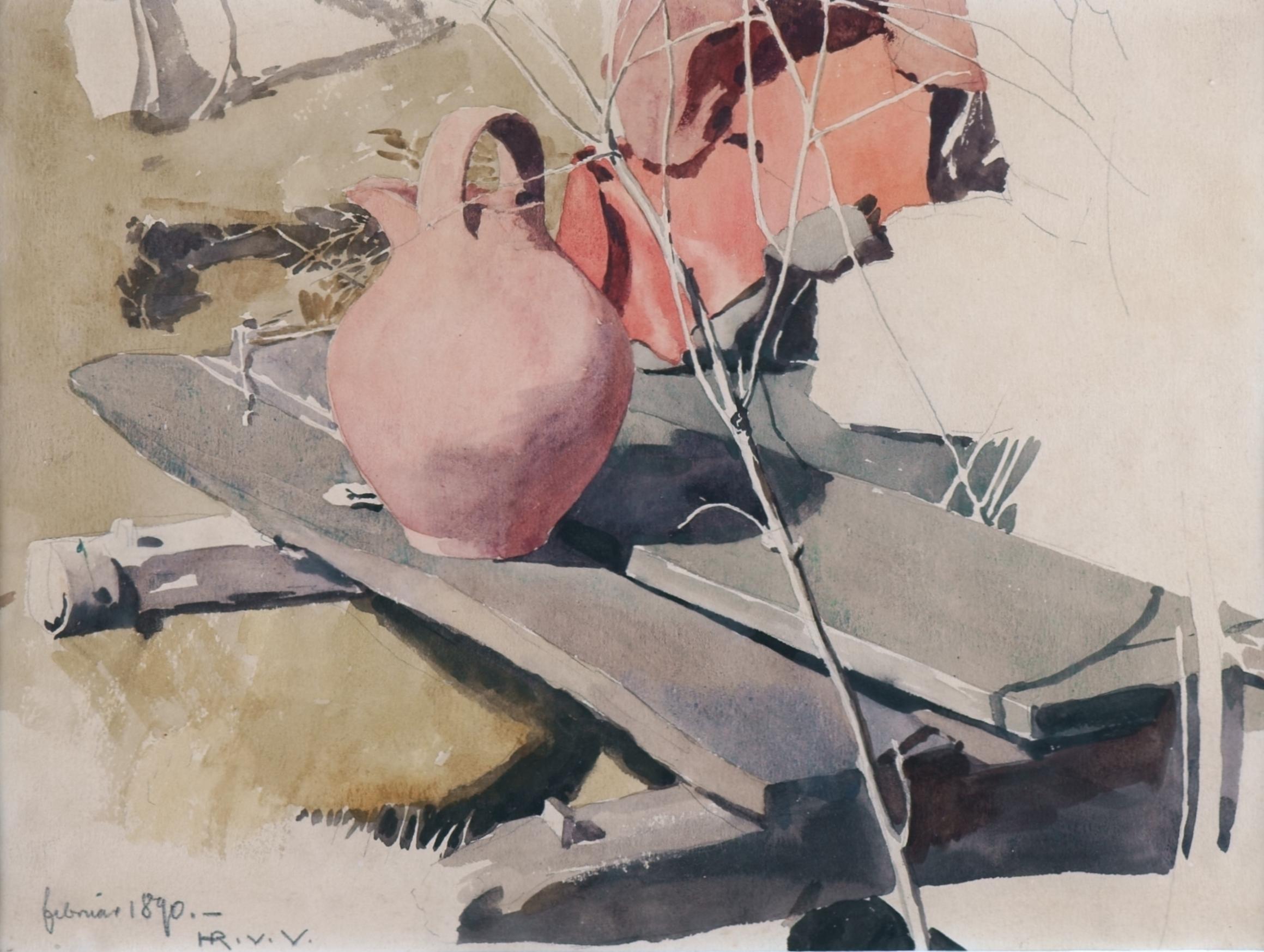
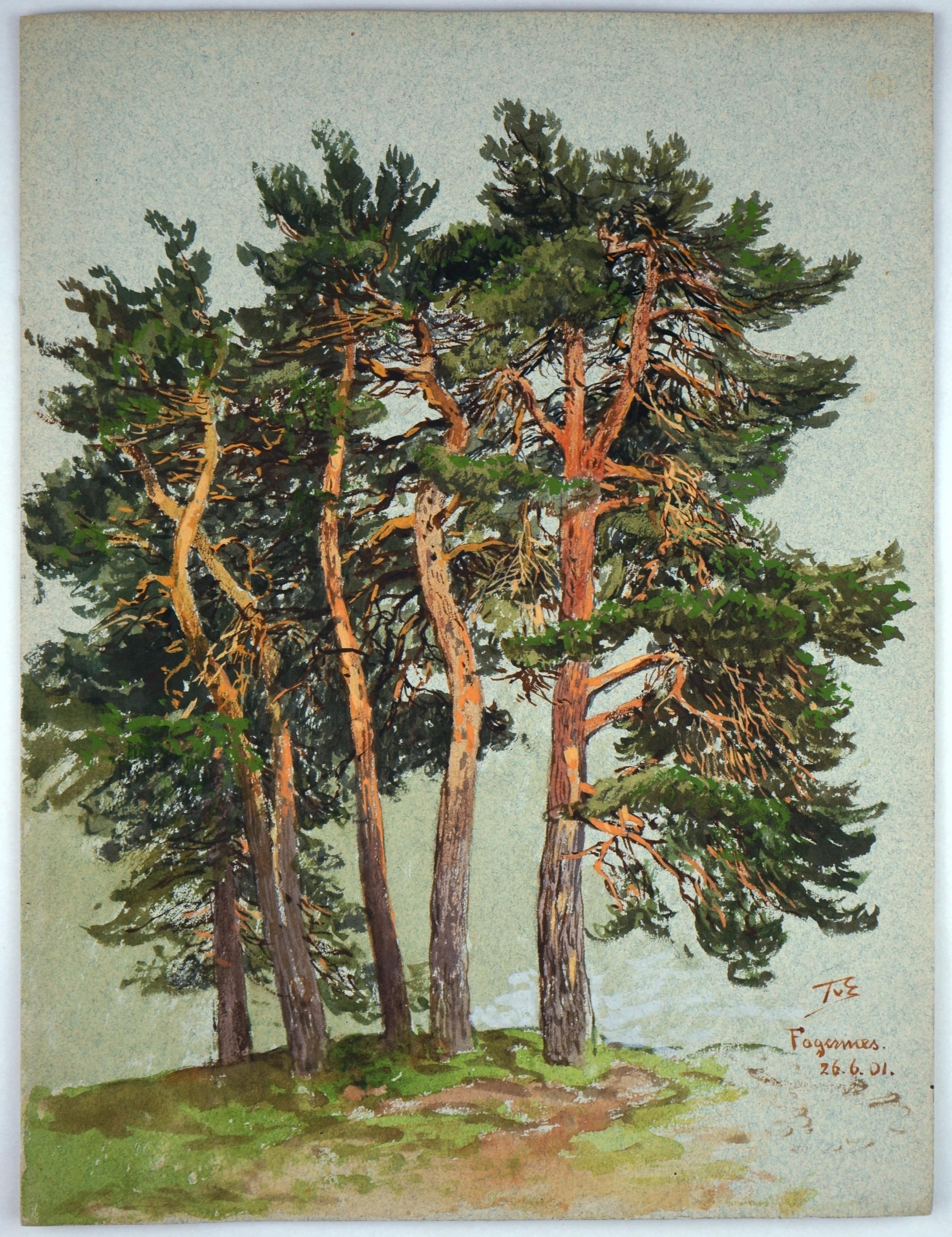
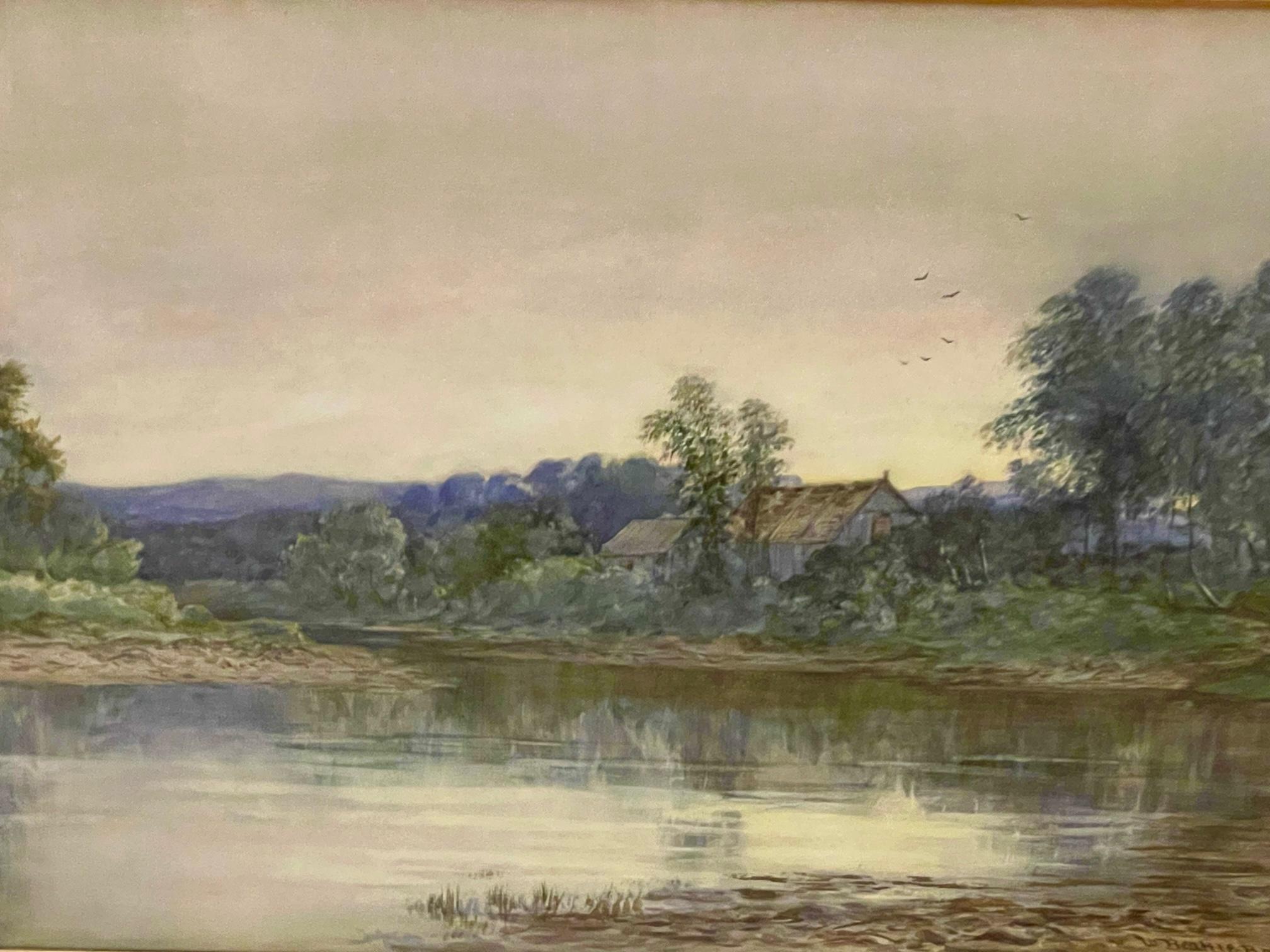
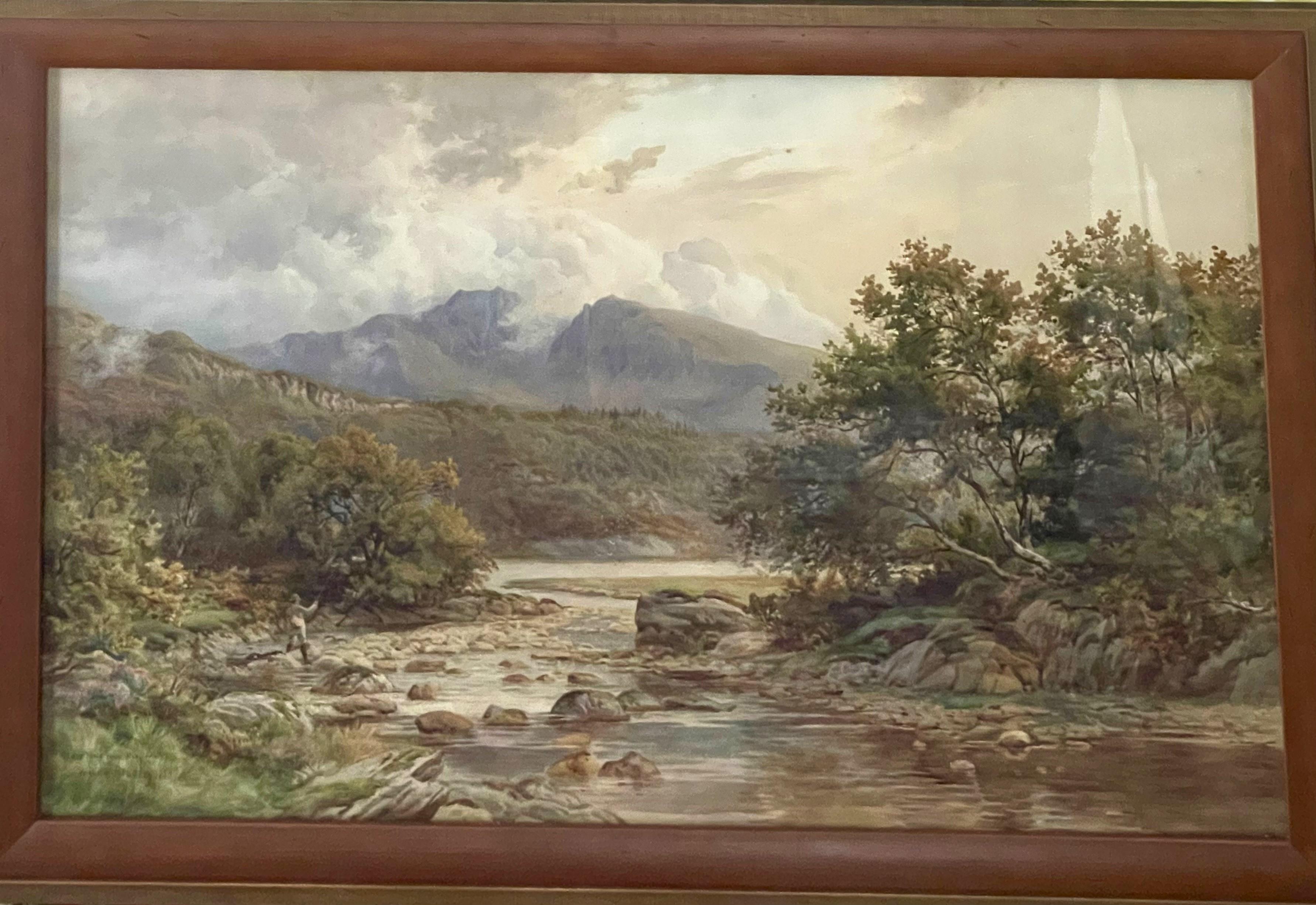
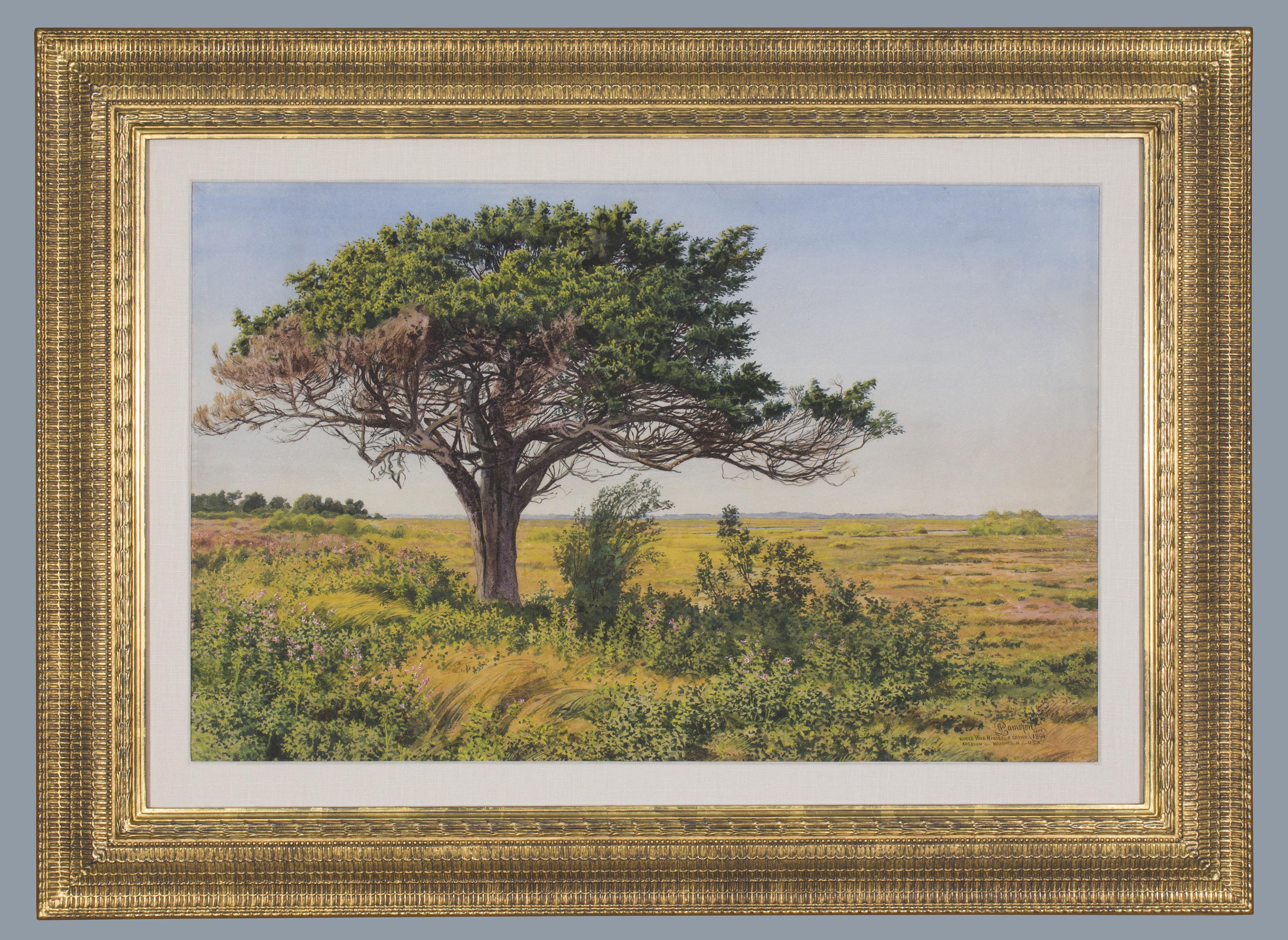
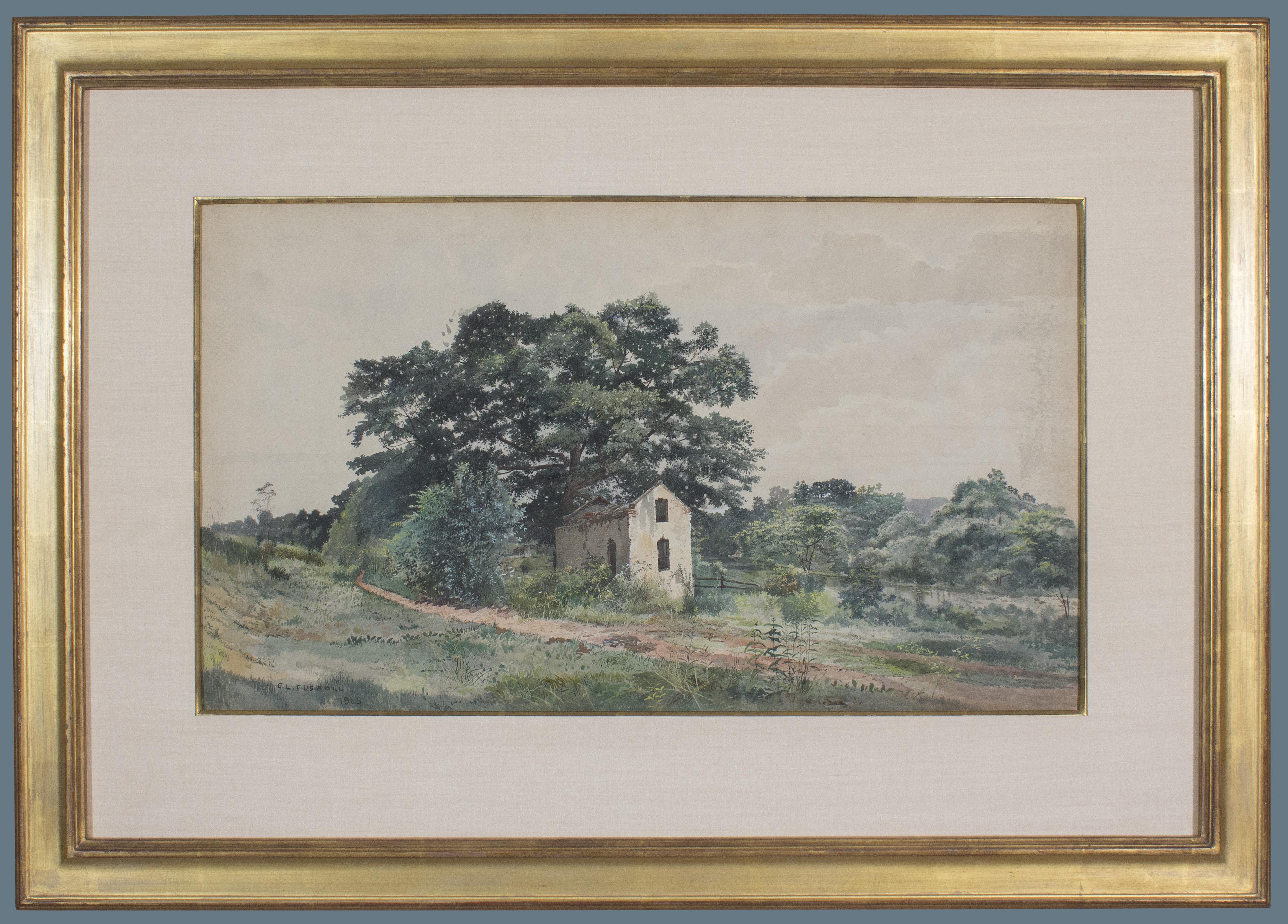
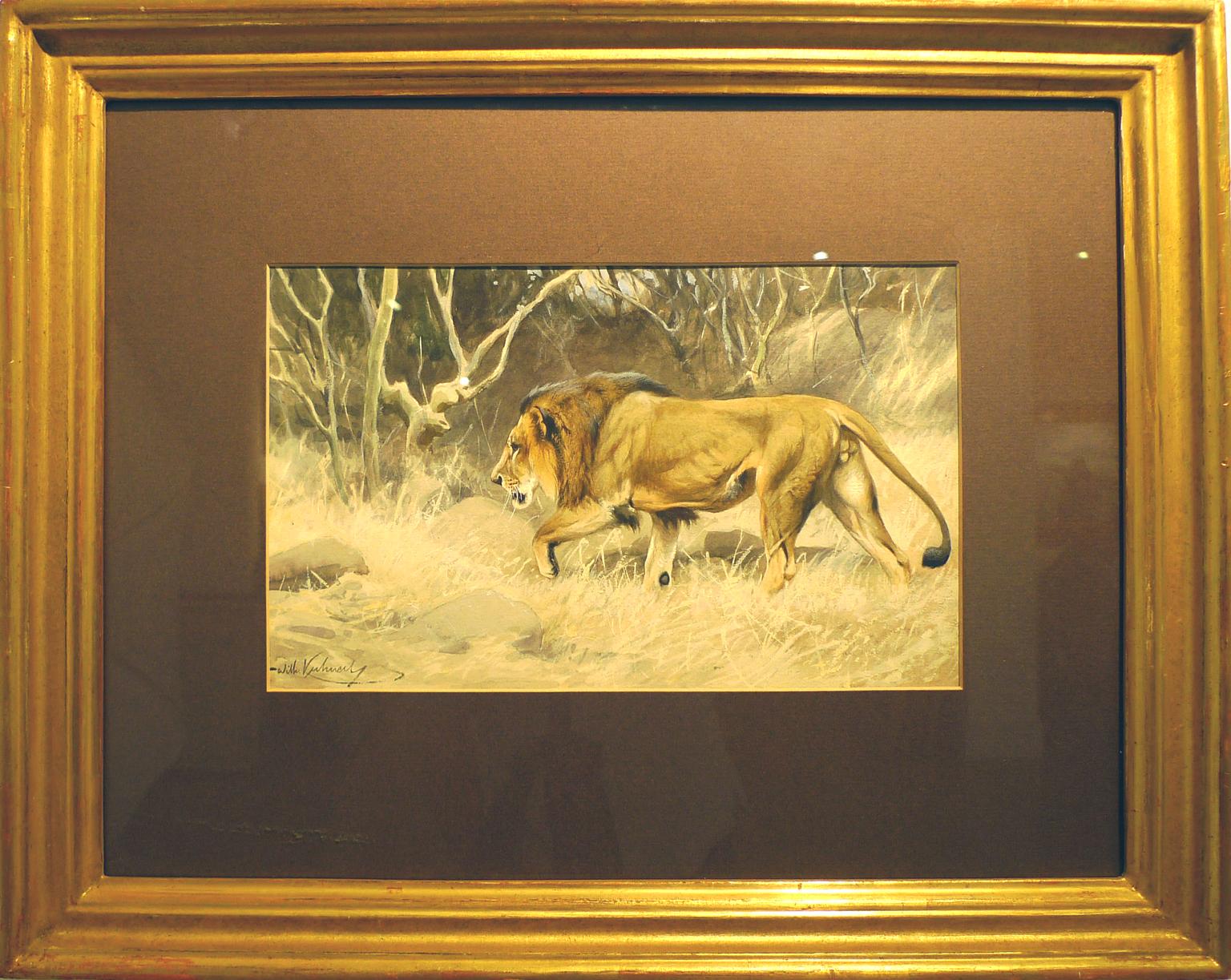
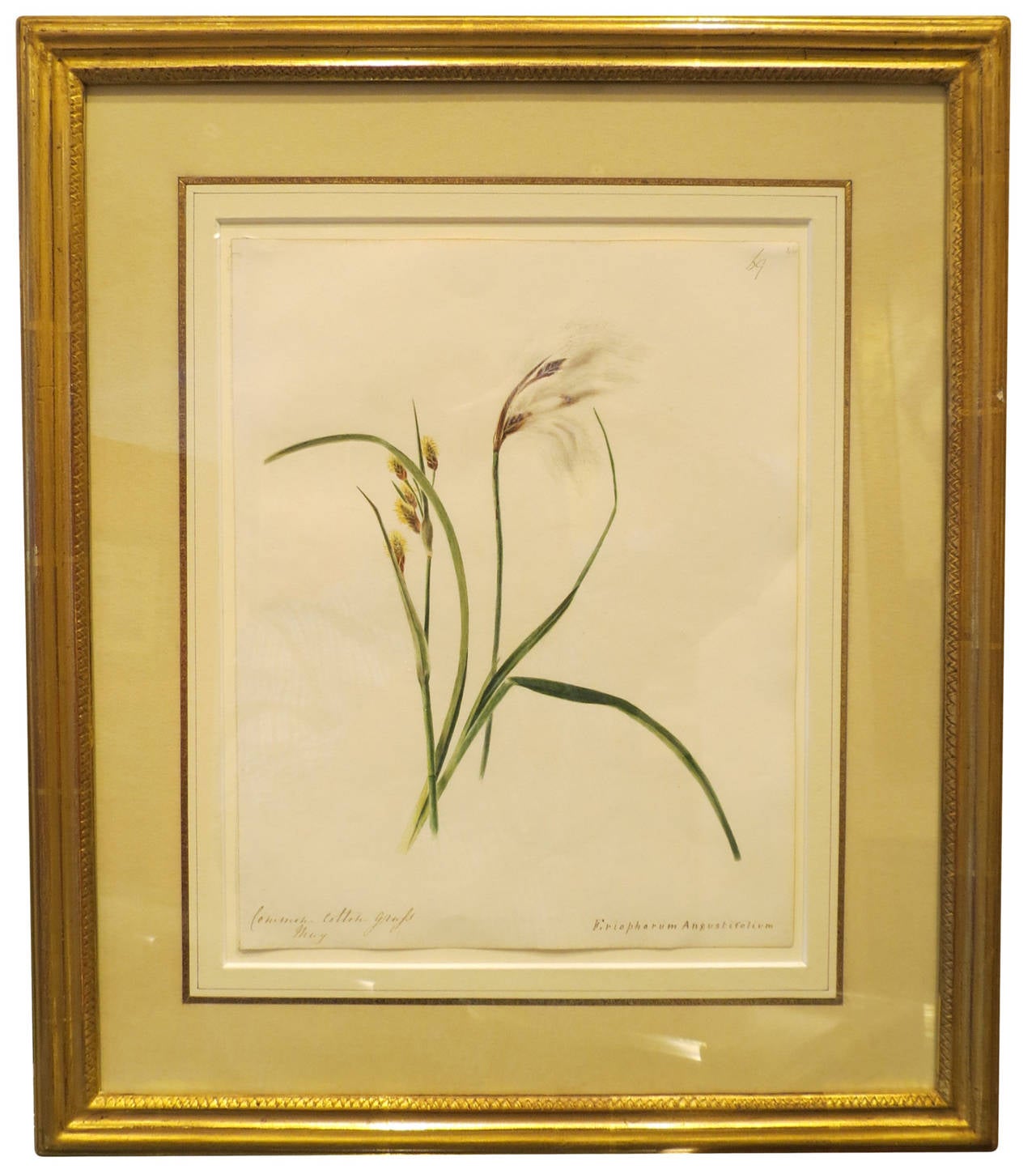

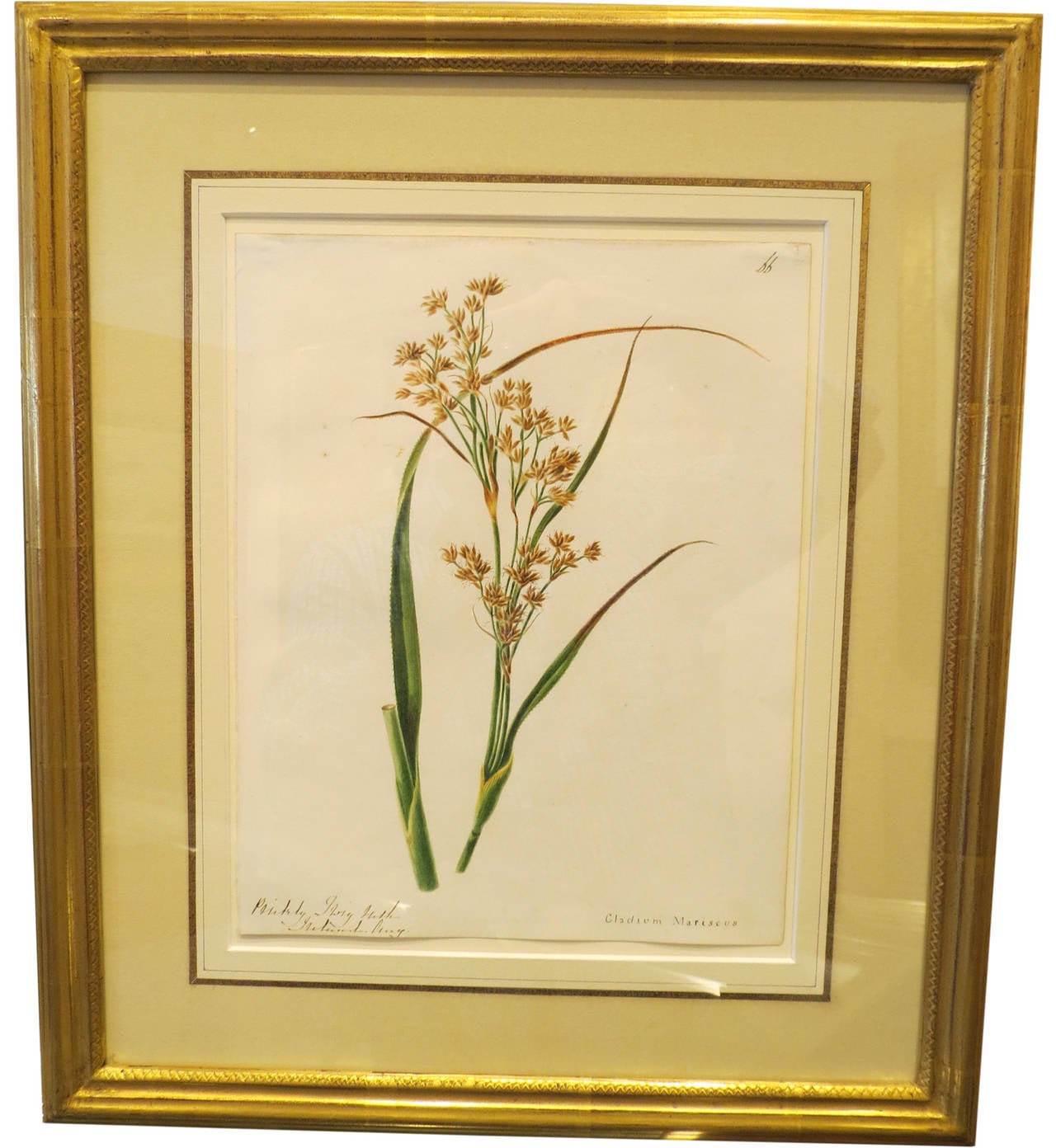

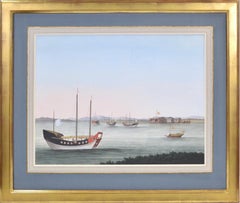
![[CHINESE SCHOOL]. Two Watercolour Scenes.](https://a.1stdibscdn.com/a_14192/1683810326664/86803a_master.jpg?width=240)
